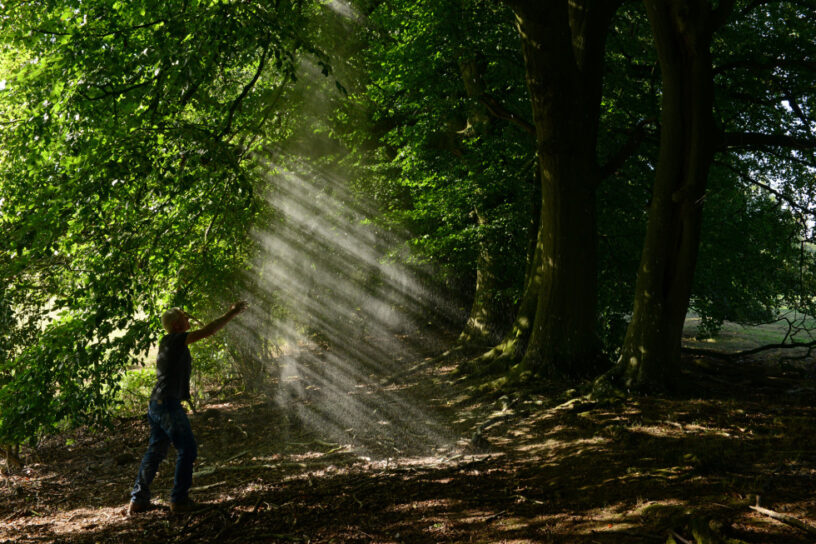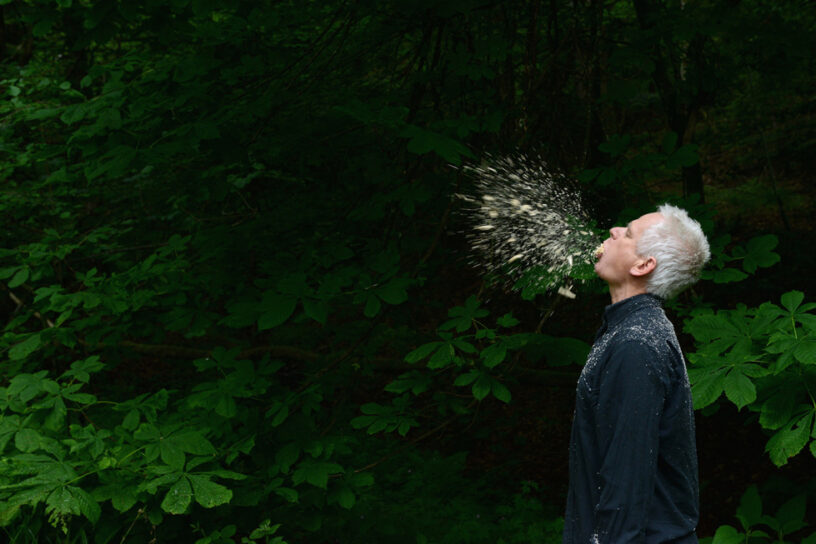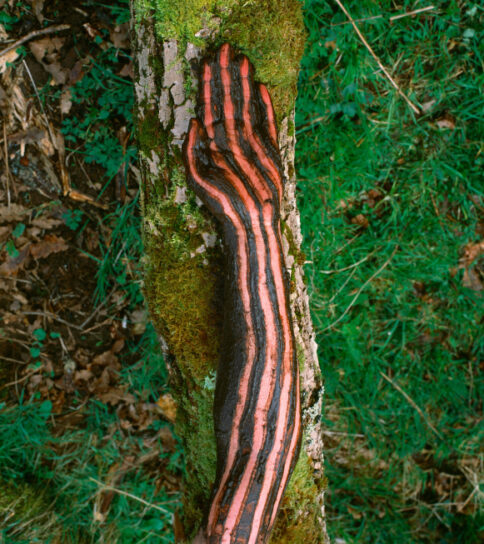- Open today 11–17
- Open today 11–17
Andy Goldsworthy: Drawing a Line
This is the first ever exhibition of the British artist Andy Goldsworthy in Scandinavia.
Since the mid-1970s Andy Goldsworthy makes temporary and permanent art works that are often deeply embedded in a landscape’s social context and history. His art often deals with public access to open lands, also across private land – a right that is taken for granted in Scandinavia, but that in many other places is highly contested.
The physical exploration of materials and places and the resistance offered by nature are vital for Goldsworthy’s artistic process. The encounter with the unplanned and the unknown is important to him, as is the complex understanding of both the beauty and danger of nature. Almost daily, he makes ephemeral works in nature with the materials at hand and from the weather conditions of the day. With wood, leaves, clay, water, stone, sunlight and rain he makes works that exist only for a few moments before nature changes or erases them. They survive in his photographs.
Recently, Goldsworthy has returned to including his body in his works, a practice that characterized his work in the 1970s. He throws seaweed, spits red poppy and walks through ice and sand. The new films shown in the exhibition are also part of this process where the body’s engagement with nature becomes a drawing in the landscape. The films are closely related to his earliest works. Goldsworthy’s first film from 1976 is shown in the study room close by.
The selection of drawings and sketches for Goldsworthy’s many site specific permanent projects in nature and in urban public landscapes shows how sketching is a vital activity for the artist and how sketches are an important tool also during the construction of a project. Even though Goldsworthy’s permanent works often differ in scale from the ephemeral, they all express his interest in the relationship between mankind and nature, materiality and change, growth and natural decay.
His interest in the line appears in many of his works, as well as in the work he made directly for Skissernas Museum’s galleries. He draws on the wall with dried plant parts, attaching vigorous stems with thorns to create lines that respond to the shape and movement of the space. In a similar way, Goldsworthy explores the gallery space in the sculptures made from cattail found in wetlands in Lund. The cattails, picked last autumn, dried during winter and spring. The removal of the seed pods makes visible the fragile, spearlike growth tip, which, in the work nearby, Goldsworthy makes use of in drawing the room. Assembled with long, rough thorns, the cattails appear as lines against the light – a graphic gesture. Its materiality only emerges from behind.
Goldsworthy works all around the globe and his work is in the collections of many important museums. He was born in 1956 in Cheshire, England, and he has lived and worked in Scotland for over 30 years.
During the exhibition, the Museum shows Thomas Riedelsheimer’s celebrated documentary about Andy Goldsworthy, Rivers and Tides (2001). For the first time in Sweden the Museum also shows Riedelsheimer’s new film Leaning Into the Wind (2017), which focuses on Goldsworthy’s permanent projects. Goldsworthy’s two latest books Ephemeral Works 2004-2014 (2015) and the newly published Projects are available in the study room.
Film screenings:
Thursday 18 january
Rivers and Tides, Andy Goldsworthy Working with Time
19.00 Birgit Rausings hall, 1 h 32 min.
Thursday 25 january
Leaning Into the Wind, Andy Goldsworthy
19.00 Birgit Rausings hall, 1 h 33 min.




